Wondering if businesses are still investing in Facebook ads after the Apple iOS 14.5 update?
Well, yes they are.
In 2021 alone, Meta (formerly Facebook Inc.) generated $114.93 billion (U.S.) in ad revenue. Moreover, according to Statista, over 37,000 U.S. advertisers placed Facebook ads in the second quarter of 2021.
With so many brands using Facebook ads to attract potential customers, you need to make sure your ads stand out from the crowd if you want to get clicks. One of the best ways to do this is to focus on your ad copy. In this blog, we’ll share some tried-and-true techniques to create high-performing ad copy.
Why is ad copy important?
Facebook ads consist of a few key elements: image, headline, CTA, and ad copy. While a bold, eye-catching image is most likely to grab the audience’s attention, it’s up to the copy to convince them to click the ad and enter the marketing funnel.
Your Facebook ad copy matters because it:
- Explains your unique value proposition and lists product benefits
- Introduces your brand
- Describes your unique offer
- Gives your target audience reasons they should choose your brand over the competition
- Helps you run successful retargeting campaigns by calling back users to give your offer another chance
Successful ad copy allows you to make a lasting impression on potential customers. But what differentiates successful ad copy from the rest?
How to write ad copy that users want to click
Be direct
Most Facebook ad placements have a primary text limit of 125 characters, a 40-character headline limit, and a link description limit of around 30 characters.
With this limited room to work with, your ad copy needs to get straight to the point to make the right impression and grab user attention. Focus on user benefits and explain how your service or offer will solve your audience’s problem.
QuickBooks’ ad first describes the service’s unique value proposition, “Manage your business, anywhere, anytime,” then presents them with the offer, “Subscribe today and save 50%.” The CTA button is relevant to the offer and the link description.
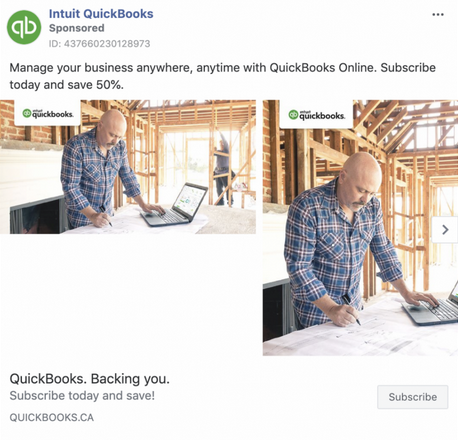
Personalize your copy for different audience segments
Writing generic ad copy is easier than crafting audience-specific copy, but it is also significantly less effective.
Your product may have different use cases depending on the audience, and ad copy that works for one set of circumstances might not work for the other.
For example, when creating ads for their portable microphone products, Tula Mics uses separate ad copy for content creators than they do for work-from-home professionals who want to use the portable mic to attend Zoom meetings.
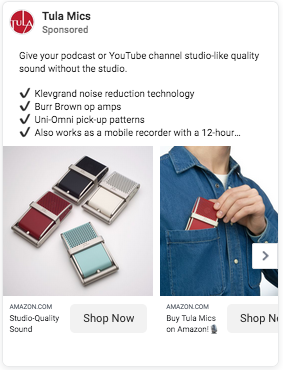
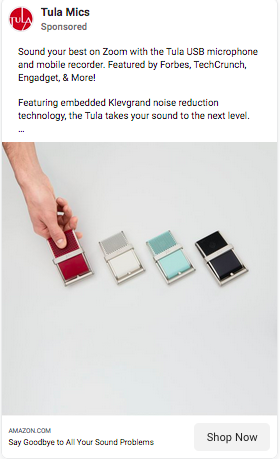
Try segmenting your audience by interests, pain points, age, gender, and so on. Create ad copy that each segment identifies with and finds relevant. Facebook gives you extensive audience targeting options, so use them to your advantage and create ad copy that is relevant and personalized to each audience bucket.
Get them to pay attention with social proof
Featuring testimonials and customer reviews in your Facebook ad copy helps establish social proof, which cements your offer’s credibility.
Try to keep your social proof short and impactful. Calm’s ad showcases a customer testimonial explaining how the app helps them relax. By hearing real stories from genuine customers, your audience will find it easier to imagine the benefits conversion will bring.
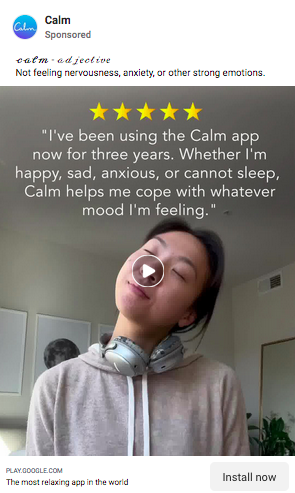
Add a relevant CTA button
The Facebook Ads Manager gives you a list of CTA button copy to choose from, depending on the campaign objective you’ve selected for your ad campaign. Make sure your ad CTA button copy matches the action you want your visitors to take on the landing page.
Mailchimp’s “Sign up” ad CTA button copy matches the CTA button copy on their landing page.
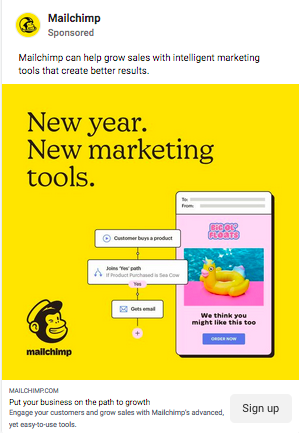
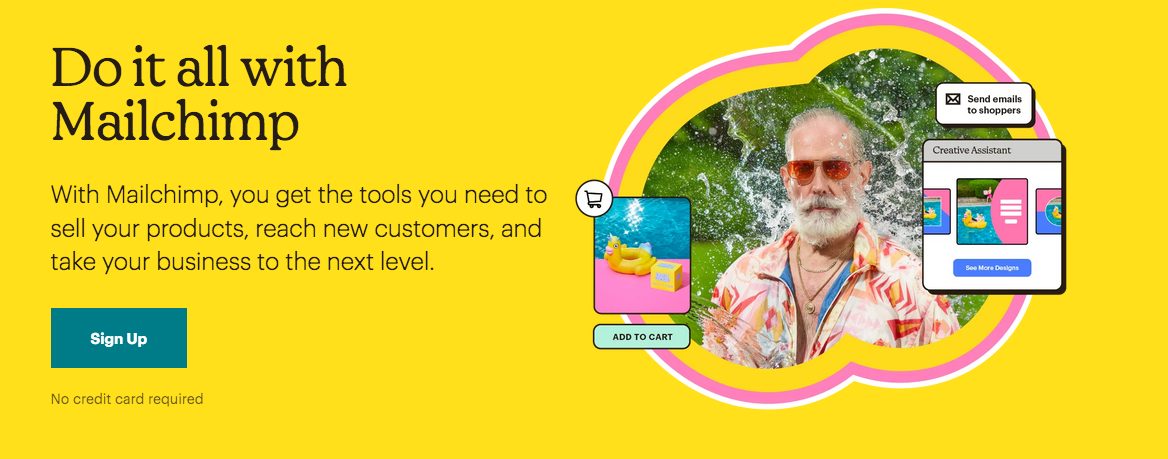
Message-match your ads to your landing pages
Audiences want to see ads that are relevant to them. And when businesses show their ads to appropriate audiences, they see better business outcomes. Ads that are more relevant also cost less and see better results, thanks to Facebook’s Quality Ranking. This leads to better experiences for people and businesses alike.
Facebook’s ad relevance diagnostics help you diagnose whether your ads are relevant to the audience you reached based on three factors:
- Quality Ranking: How your ad’s perceived quality compares to ads competing for the same audience
- Engagement Rate Ranking: How your ad’s expected engagement rate compares to ads competing for the same audience
- Conversion Rate Ranking: How your ad’s expected conversion rate compares to ads with the same optimization goal competing for the same audience
Remember, ad clicks aren’t conversions. If your ad attracts customers, but the landing page doesn’t inspire conversions, you’ve paid for a useless click.
And if you want to ensure your ad clicks translate into advertising conversions, you need to message-match the pre- and post-click experiences.
The ad and corresponding landing page need to have consistent branding, be relevant to the user, tell the same story and have the same conversion goal. When you connect your ads and landing pages seamlessly, people trust the offer and your brand, making them more likely to click the CTA button. Ideally, you should be able to match your ads with your campaign. Whether you coordinate the exchange or use a tool you want to ensure your brand assets are consistent from the first touch point to the CTA. There are tons of branding tools like HubSpot, Icons8, Bynder, and more.
This Intercom ad and landing page promote the same “View Demo” offer. They have the same branding colors and focus on the same story, “Build great customer relationships at every stage of the customer journey with Intercom’s chatbots.” A visitor who clicks the ad can act on their interest without delay.
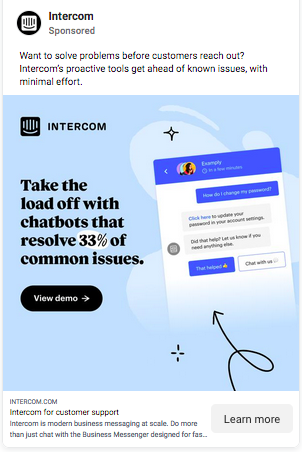
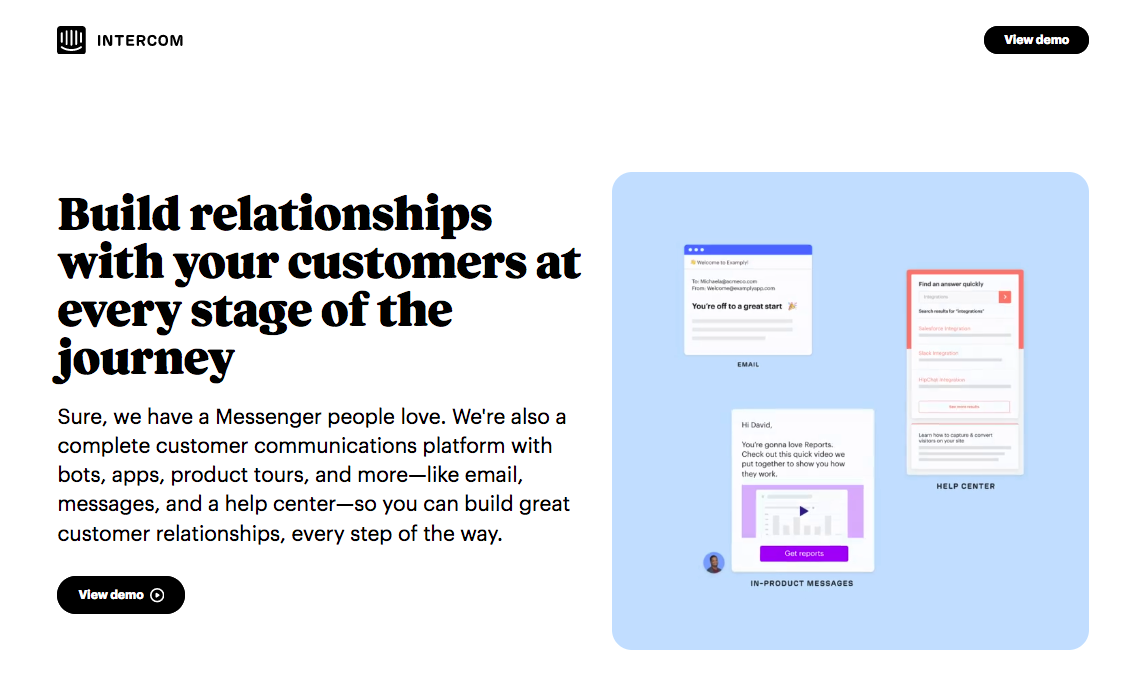
Craft relevant, personalized Facebook ad copy to get conversions
Multiple factors go into writing click-worthy Facebook ad copy. However, it all starts with understanding your target audience and writing ads they want to click.
Always connect Facebook ads with relevant, dedicated, and message-matched landing pages to ensure that you don’t just get the ad click, but also generate advertising conversions.
Don’t know where to start?
Let Instapage help. Use the platform to create relevant, on-brand, mobile-responsive landing pages for better conversions and a higher ROAS.
Find out more by scheduling an Instapage demo here.
